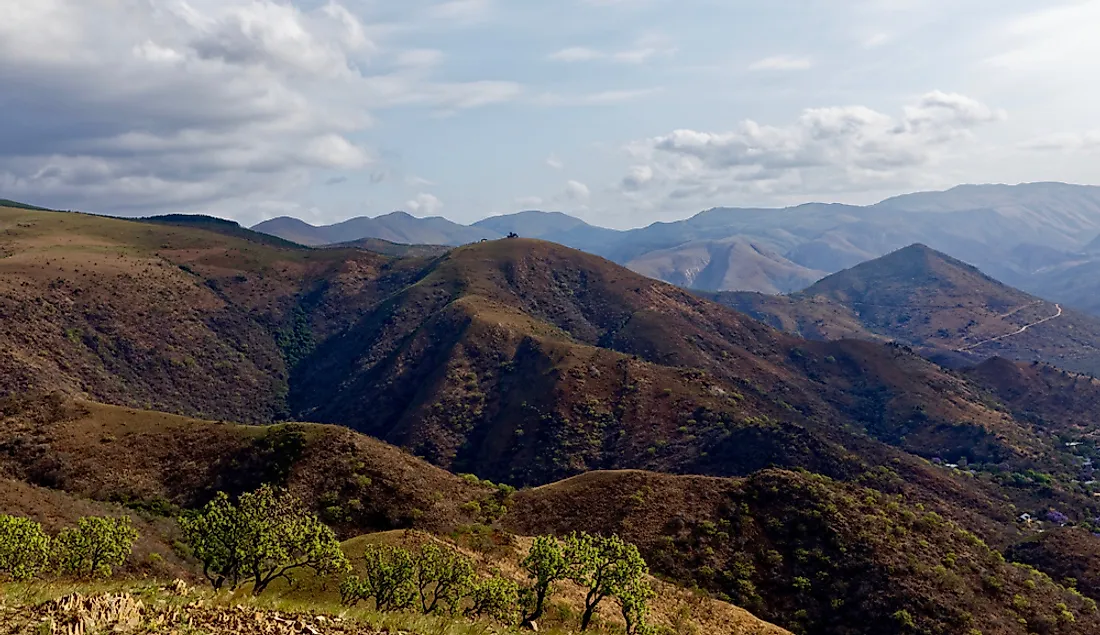Which Is The Oldest Mountain Range In The World?

According to scientists, as well as the Guinness World Records, the Barberton Greenstone Belt in South Africa holds the distinction of being the oldest mountain range in the world. Located on the eastern part of Kaapvaal Craton, an area which covers some 460,000 square miles, this rich natural landform is of particular scientific importance because it is one of only two sites in the entire world where unspoiled portions of the Earth’s crust, dating as far back as 3.6 to 2.5 billion years, can be found. Also known as the Makhonjwa Mountains, this unique geologic structure is made up of an array of rocky hills, grassy upland areas, mountains, and treed valleys all of which are believed to have originated about three and a half billion years ago.
Geology of the Barberton Greenstone Belt
In terms of dimensions, the Barberton Greenstone Belt covers a land area of about 74 miles by 37 miles in the north-eastern portion of South Africa. In terms of height, the mountains vary from just over 1,968 feet up to an altitude of 5,905 feet over sea level. The range sits on the border of South Africa’s Mpumalanga province and the Kingdom of Eswatini, which until April 2018 was known as Swaziland. Due to the Barberton Greenstone Belt’s gold deposits, volcanic rock, ancient fossils, and overall geologic importance the area was declared to be a UNESCO World Heritage Site in 2018.
Scientific Importance
One of the major reasons why the Barberton Greenstone Belt is so significant in terms of scientific research is due to the age of its exposed rocks, the oldest of which dates all the way back to the Paleoarchean era. Studying the geologic material which composes this mountain range has enabled scientists to chart the history of our planet from ancient to modern times. Over the years, the Barberton Greenstone Belt has proven to be a treasure trove of information in regards to mapping the Earth’s development. Specifically, these mountains provide insights into the Precambrian era, which is regarded to be the earliest period of the Earth’s geologic evolution and the time when it’s believed that the continents took shape and life began. Because of the valuable information it has provided, the world’s oldest mountain range has earned the nickname of being the “Genesis of life.”
Types of Rock
Scientists also believe that the Barberton Greenstone Belt was the site of a major meteor crash that took place approximately 3.26 billion years ago. The size of the extraterrestrial meteor is estimated to have been 23 to 36 miles in width although the actual remains of the crater have never been located. In terms of varieties of rocks, the Makhonjwa Mountains have been found to be rich with significant deposits of volcanic, sedimentary, igneous, and meta-igneous rock called komatiites as well as breccia (rocks composed of small broken pieces of minerals or stone bound together by tiny crystals or grains).
Gold
As in many regions of South Africa, the Barberton Greenstone Belt is well known for its gold deposits. According to statistics from 2017, the country of South Africa ranks as one of the largest producers of gold in the world. Although the industry has been in decline for many years in 2017 it produced 154.2 tons of the precious metal. Gold was initially discovered in the Makhonjwa Mountains by George Barber and his two cousins in 1875. Since then, the mountain range has been the site of the oldest gold deposits ever unearthed.











